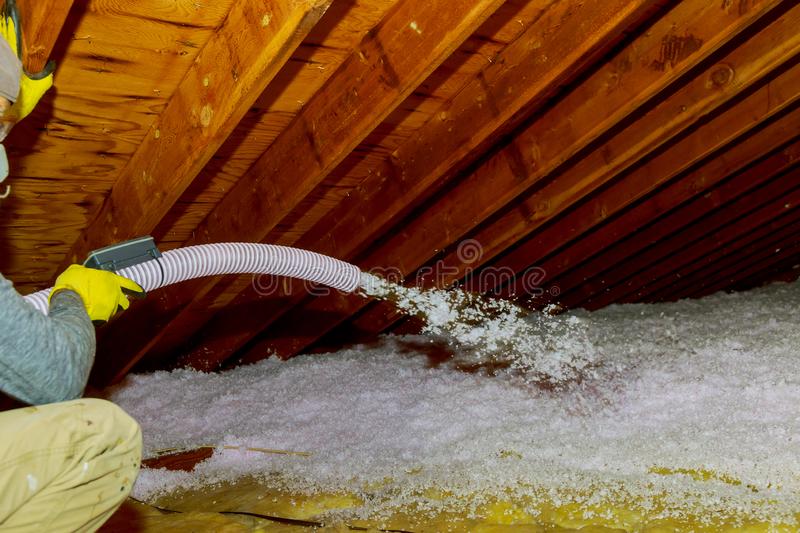Basic Insulation Buying Tips
Insulation is the process of enclosing or covering an object with a material that serves as a barrier and reduces (or blocks) the flow of energy, specifically heat. It is essentially used for the following reasons:
-To reduce heat energy losses.
-To prevent nearby objects from heating up.
Below are some examples where insulation is typically used:
-On appliances - stoves and ovens, refrigerators and freezers, water heaters, water pipes, etc.
-On industrial applications.
When done properly, insulation can provide indoor comfort (by keeping your house cooler in the summer and warmer in the winter) and energy efficiency.
Determining and buying the insulation that is right for your household can be a challenge. Below are some helpful hints on how to go about buying the perfect insulation for your home.
#1 What to insulate.
The first thing to consider is to identify where the insulation will be installed or used. A personal inspection of your home may be sufficient, but it is still best to let the qualified people (such as your contractor) do the job.
Depending on your (or an expert's) findings, your household might need any or all of the following insulation:
-Wall/cavity wall insulation. Cavity wall insulation prevents your house from being exposed to rapid temperature changes outside. Studies show that heat loss due to un-insulated walls can reach as much as 50%, and cavity wall insulation could possibly prevent 70% of this from happening.
-Loft/roof insulation. Because hot air rises, heat loss through the roof can reach as much as 25%. This can be greatly reduced with proper attic or loft insulation.
-Duct/pipe insulation. Leaky ducts or pipes can contribute to an increase in your heating (or cooling) costs. They can also burst (or freeze), so it is also important to have them properly insulated.
-Water cylinders/storage tanks. Hot water cylinders and cold water storage tanks also need to be insulated event them from being exposed to intense cold or heat.
#2 What to Use to Insulate
Traditional insulating materials that are commonly-used in the households are the following:
Fiberglass/fiberglass mats/mineral fiber. Fiberglass is the most common and versatile type of insulating material that is made from molten glass and spun into microfibers.
Usually pink or yellow in color, fiberglass comes in 3 forms:
- Rolls - blankets of insulation that may or may not have vapor barriers, which prevent condensation in cold areas that could result in damage (such as mold).

- Batts - similar to rolls but come in lengths ranging from 4 to 8 feet.
- Blown- these are loose insulation that can be 'blown' into walls or ceilings.

Cellulose Insulation
Another insulating material that is commonly used in households is cellulose. It is a fibrous material made from scrap or recycled paper (like newsprint or cardboard) that is shredded and treated with chemicals that would make it resistant to fire and insects. It is then applied (poured or blown-in) into place, either as loose-fill or wet-sprayed with the use of a machine.
Rock wool
As the name implies, rock wool is an insulating material that is made from rock. Manufactured similarly to that of a fiberglass (with molten rock replacing glass), rock wool can be in the form of a hollow brick or a porous concrete block.

Synthetic insulation
Synthetic insulating materials are manufactured in several forms, some of which are the following:
Polystyrene foam - usually as rigid, pre-cut boards.
Polyurethane foam - usually as boards or foamed 'insitu' ("in position").
Spray-on expanding foam - similar to that found in aerosol cans, it can completey seal and insulate even the smallest areas in the house by 'poofing' up to as much as 2 to 4 times the original size when applied.
Deciding on the right material to be used for installation largely depends on the area that requires installation. Below are some of the standard insulating materials that are recommended for the specific areas in your home:
For loft or roof insulation
- Mineral wool quilt
- Blown mineral wool
- Blown cellulose fibre
For duct or pipe insulation
- Mineral wool mat
- Pre-formed split foam insulation
- Foil-faced fiberglass insulation
- Vinyl-faced insulation
- Ridged foam insulation
For wall insulation
- Blown-in cellulose
- Fiberglass (batt and roll) insulation
#3 Check with an expert
Aside from your personal considerations, the key to finding the perfect insulation for your home is to consult a professional who is knowledgeable in this field. It is still best to check with an expert, who could provide you with several options that would best suit your needs.
Insulating your home may add to your household expenses today, but in the long run, it will not only save you money (by lowering your utility bills); it will also protect you and your property.











